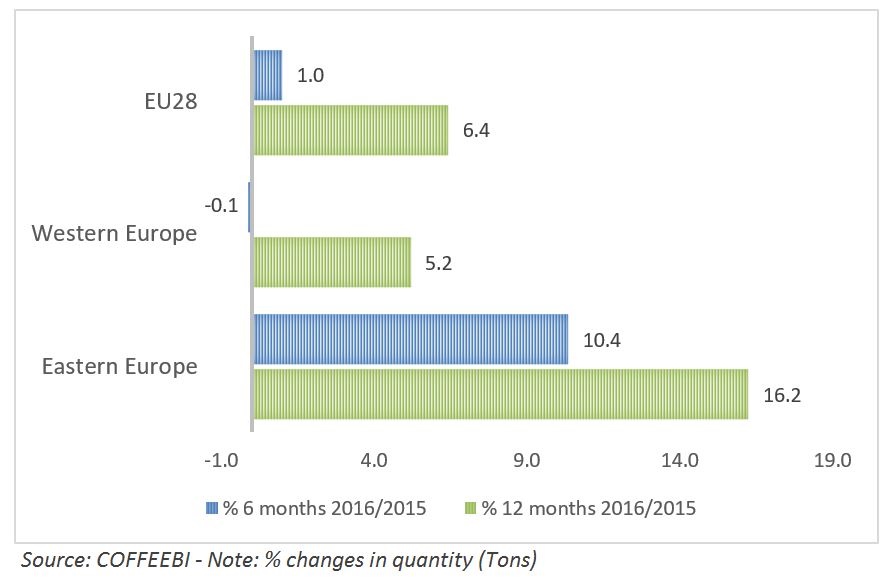Coffee: From Commodity, to Cultural Icon, to Luxury Good
 Over the past decades, coffee culture has been constantly riding a wave of evolution. To be more precise, as of now, 3 different waves of coffee have been identified, giving insights into the many ways that coffee has evolved and adapted in our society.
Over the past decades, coffee culture has been constantly riding a wave of evolution. To be more precise, as of now, 3 different waves of coffee have been identified, giving insights into the many ways that coffee has evolved and adapted in our society.
But one might wonder: “What are the different waves of coffee and what’s the difference between them?”
A look at changing trends of the coffee industry, from coffee production to coffee shops, and coffee distribution to consumption, can help towards differentiating between the different waves of coffee and provide wisdom on where the industry could go. As each wave sets the stage for the next one to follow, the key is in understanding how the various waves of coffee help create a consistent story of the coffee industry, from a cheap commodity to a cultural keystone to a form of art.
By doing so, individuals as well as organisations can understand and define their needs and requirements, in relation to current coffee trends. This in turn, allows them to make the best possible decisions regarding their preferred coffee beans, coffee grinders, and coffee machine rentals.
The First Wave
The beginning of the first wave of coffee can be traced back to the early 19th century. The introduction of widely available coffee grinders, machines and methods for packaging and preserving coffee beans significantly increased mass coffee consumption. Furthermore, the development of instant coffee drove coffee consumption through the roof, as it helped bring easier and cheaper access to coffee products, while creating a significant market for instant coffee brands.
As the demand and access to various coffee making methods continued to grow, the average daily coffee consumption increased exponentially throughout the world, highlighting how, up to that point, coffee was considered a commodity good. Coffee as a commodity was, and still is, available for mass production and distribution, and can be easily bought on market exchanges.
The problem with coffee as a commodity was that taste and quality were sacrificed to provide more affordable products to the market, and profit to coffee businesses.
The Second Wave
As the average coffee consumption increased worldwide, so did the number of people willing to pay a bit more in order to have a coffee with better quality and taste. With the introduction of various coffee shops, such as Starbucks, Costa Coffee and Peet’s Coffee and Tea, the second wave of coffee was established, promoting dark-roasted coffee made from high-quality beans.
And so, the term ‘specialty coffee’ was introduced to describe this new shift in the industry and its customers. Specialty coffee unlocked this new wave and revealed unique characteristics of individual coffee beans. Consumers started to recognise distinctive tastes and flavours, which ultimately led to various new philosophies and ideals within the industries.
Terms like ‘latte’ and ‘flat-white’ helped expand the variety of coffee products available, while baristas started to provide a unique experience for customers. By doing so, a unique coffee shop culture was founded, where the terminology of coffee was less about the caffeinated drink itself, and more about the experience as a whole.
With time, more and more coffee shops began shifting their marketing dollars to providing a place for connection. However, this did not go unnoticed by coffee lovers, who were turned away by how the experience provided by coffee shops overshadowed the actual taste and quality of the coffee itself.
The Third Wave
The third wave is all about providing the best coffee quality and taste, by bringing the focus back to the actual coffee itself instead of the experience. Various third wave roasters and coffee shops committed to re-training their employees and transparency about the coffee production and the origin of the coffee beans they used.
Furthermore, social consciousness was increased as coffee shops and roasting companies started focusing on providing more economic, socially and environmentally sustainable coffee, and teaching customers about the values of sustainable farming methods, fair-trade, and organic food and coffee production and consumption.
The third wave of coffee completely transformed the focus of the industry, proving that coffee was neither a commodity good nor a cultural keystone, but a luxury item and a form of art.
As the third wave of coffee has been in deployment for more than a decade now, coffee shops, experts and consumers have been wondering what the next wave is going to be.
Despite rumours that the fourth wave of coffee will concern the science of coffee, and the fifth wave will centre around the business of coffee, things are still uncertain at this point of time. Many visionaries have claimed to have unlocked the coffee’s fourth wave, but only time can tell if customers and the coffee industry are ready for such a shift.



